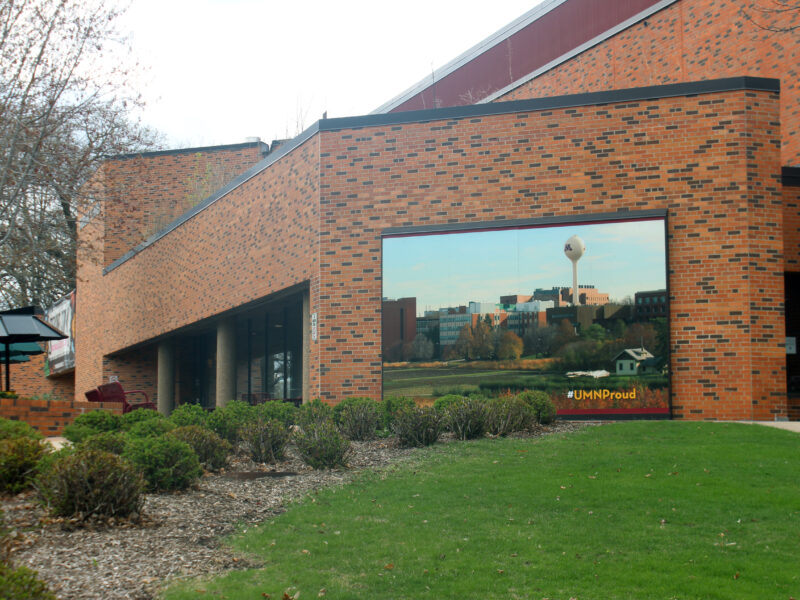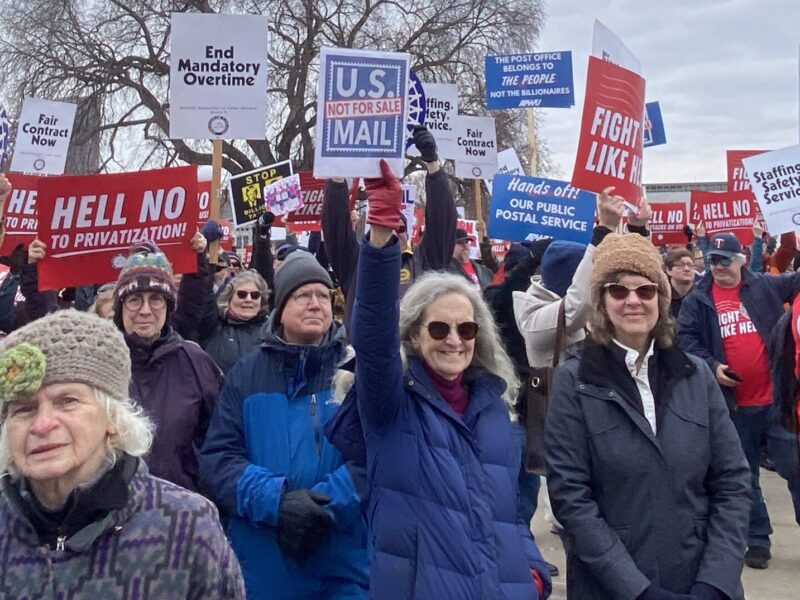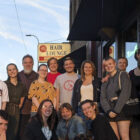The union says the labor relations system is in shambles, and low-wage employees are subject to severe mistreatment.
Minnesota
“We Are In This For the Long Fight”: How Workers and Unions are Reclaiming the Labor Movement
|
Rank-and-file union members are preparing to confront the policies targeting their workplaces and communities.
Minnesota
Starbucks Unions’ Christmas Eve Strikes Inspire Two More Minnesota Stores to Unionize
|
Here’s why workers are kicking off two new Starbucks union drives.
Minnesota
Why Delta Air Lines Workers Are Fighting for a Union
|
Workers are ramping up organizing efforts at the most profitable airline company on the planet.
Immigration
How St. Paul Teachers Are Defending Immigrant Families
|
Teachers in the state’s capital city are taking action against recent threats toward the immigrant community.
Art
Guthrie Theater’s Front-of-House Workers Fight for a First Contract
|
Eva Nereson, 23, has worked as a housekeeper at the iconic Guthrie Theater in downtown Minneapolis for the past three years, in both part- and full-time capacities. She describes her duties as cleaning “everything that people are likely to see when they come in and see a show at the Guthrie,” including the lobby, carpets, bathrooms, and inside the theater.
In June, the front-of-house workers of the Guthrie, which includes guest services workers, box office staff, lounge hosts, janitors, and ushers, won their union with 70% of workers voting in favor. Represented by International Alliance of Theatrical Stage Employees (IATSE) Local 13, the workers are preparing to bargain their first contract.
They are fighting for wage increases, reinstatement of some positions that were cut, more transparency of pay tiers, scheduling hours two weeks in advance, additional safety training, and support with parking. Some positions, like ushers, work short shifts, and the cost of their wages for the day are eaten up almost entirely by the cost of parking in downtown Minneapolis, workers say.
In interviews with Workday Magazine, they reflect on the importance of their role in the Twin Cities’ arts community—as many are frontline workers at multiple local venues, an increasingly unionized sector, and contribute as working artists themselves.
Nereson describes the moment of calm after crowds of theater-goers rush in for a show: “It’s very zen for me.” In addition to working at the Guthrie, Nereson also works at the Minneapolis Park Board as an event attendant, and goes to school at Minneapolis Community and Technical College, where she also works with the school’s theater department.
Nereson began working at the Guthrie in 2022, shortly after the theater reopened following the pandemic lockdowns. She has worked in other janitorial positions, and says when she first started it felt like “the best job I’d ever had.” The theater offered bonuses to workers, various benefits and perks, and had an overall very positive work culture, she recalls.
However, as the months went by, Nereson says a lot of these perks faded away, with workers facing cuts to holiday pay and a decline in overtime approvals, alongside a reduction in full-time positions, which intensified the workload for the remaining workers.
Minnesota
Minnesota Healthcare Workers in Deer River Continue Historic Strike
|
Around 70 workers with SEIU Healthcare Minnesota & Iowa are staying strong on the picket lines against nonprofit Essentia Health.
Minnesota
Audio-Visual Crew for the Minnesota Timberwolves and Lynx Win Union
|
After decades of misclassification and one failed union vote in 2017, the Timberwolves and Lynx audio-visual crew won their union—making them the second audio-visual union in Minnesota professional sports.
Minnesota
Audio-Visual Crew for the Timberwolves and Lynx Set to Vote for a Union, a Decade in the Making
|
The professional Minnesota basketball teams’ audio and visual crew are set to vote by mail after union busting and decades of misclassification.
Co-Ops
Workers Win Union Election at Mississippi Market Co-op
|
Workers at the local organic food co-op who organized and won union representation are hoping to build a more democratic workplace.
Midwest
The Power of Sugar Beets: Long-time Labor Organizer on Politics in the Red River Valley
|
As sugar beet harvesting season comes and goes in the Red River Valley, a labor organizer and leader reflects on worker power in the region.
















